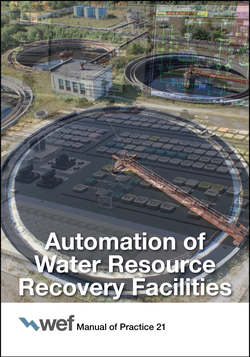Читать книгу Automation of Water Resource Recovery Facilities - Water Environment Federation - Страница 11
1.0 WHAT IS COMPLETE AUTOMATION DESIGN?
ОглавлениеComplete automation design is a philosophy that attempts to fully integrate all dynamics of an automation system design with the goal of eliminating possible errors in design and operation while simplifying the control system. This approach looks at the design of automation hardware, the design of software to be used, the design of application-specific coding, and how to convey these data to the contractor. Accomplishing these goals requires several layers of documentation, with each document designed to address different challenges or potential sources of errors. This manual specifies the type of decisions, text documents, and drawings required to perform a successful complete automation design project.
In this manual of practice (MOP), an automation system includes field instruments, communication of information to a controller such as a programmable logic controller (PLC), the controller itself, algorithms and rules (programming) for manipulating inputs, communications between the controllers and any human–machine interface (HMI), communications to control elements (such as valves and metering pumps), and the control elements themselves.
Complete automation system design requires tremendous attention to detail, arguably more so than other engineering disciplines. The design documents discussed in this manual reflect that attention to detail. Although every project will not need every document discussed herein, each project typically will require decisions on every detail before the automation system can be installed. In other words, someone will decide what to install, where to install it, where to put the wires, and how to program it. Whether that person is a design engineer, a general contractor, an electrical subcontractor, a systems integrator, a programmer, a computer-aided design specialist, an installation electrician, or a laborer digging a conduit trench depends on how complete the design documents are, which, in turn, depend on the owner’s design budget and the designer’s technical competence.
Ideally, the design engineer will make most of the decisions noted in the preceding paragraph. If left unaddressed, other parties may autonomously make decisions that suit their interests but not necessarily the interests of the project as a whole. These autonomous design decisions may result in inconsistencies across the project that can create challenges during installation, commissioning, operation, and future maintenance.
